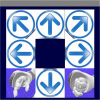Reaching and Grasping a Glass of Water by Locked-In ALS Patients through a BCI-Controlled Humanoid Robot
- PMID: 28298888
- PMCID: PMC5331030
- DOI: 10.3389/fnhum.2017.00068
Reaching and Grasping a Glass of Water by Locked-In ALS Patients through a BCI-Controlled Humanoid Robot
Abstract
Locked-in Amyotrophic Lateral Sclerosis (ALS) patients are fully dependent on caregivers for any daily need. At this stage, basic communication and environmental control may not be possible even with commonly used augmentative and alternative communication devices. Brain Computer Interface (BCI) technology allows users to modulate brain activity for communication and control of machines and devices, without requiring a motor control. In the last several years, numerous articles have described how persons with ALS could effectively use BCIs for different goals, usually spelling. In the present study, locked-in ALS patients used a BCI system to directly control the humanoid robot NAO (Aldebaran Robotics, France) with the aim of reaching and grasping a glass of water. Four ALS patients and four healthy controls were recruited and trained to operate this humanoid robot through a P300-based BCI. A few minutes training was sufficient to efficiently operate the system in different environments. Three out of the four ALS patients and all controls successfully performed the task with a high level of accuracy. These results suggest that BCI-operated robots can be used by locked-in ALS patients as an artificial alter-ego, the machine being able to move, speak and act in his/her place.
Keywords: amyotrophic lateral sclerosis; brain computer interface; environmental control; humanoid robot; locked-in syndrome.
Figures




References
LinkOut - more resources
Full Text Sources
Other Literature Sources
Miscellaneous

